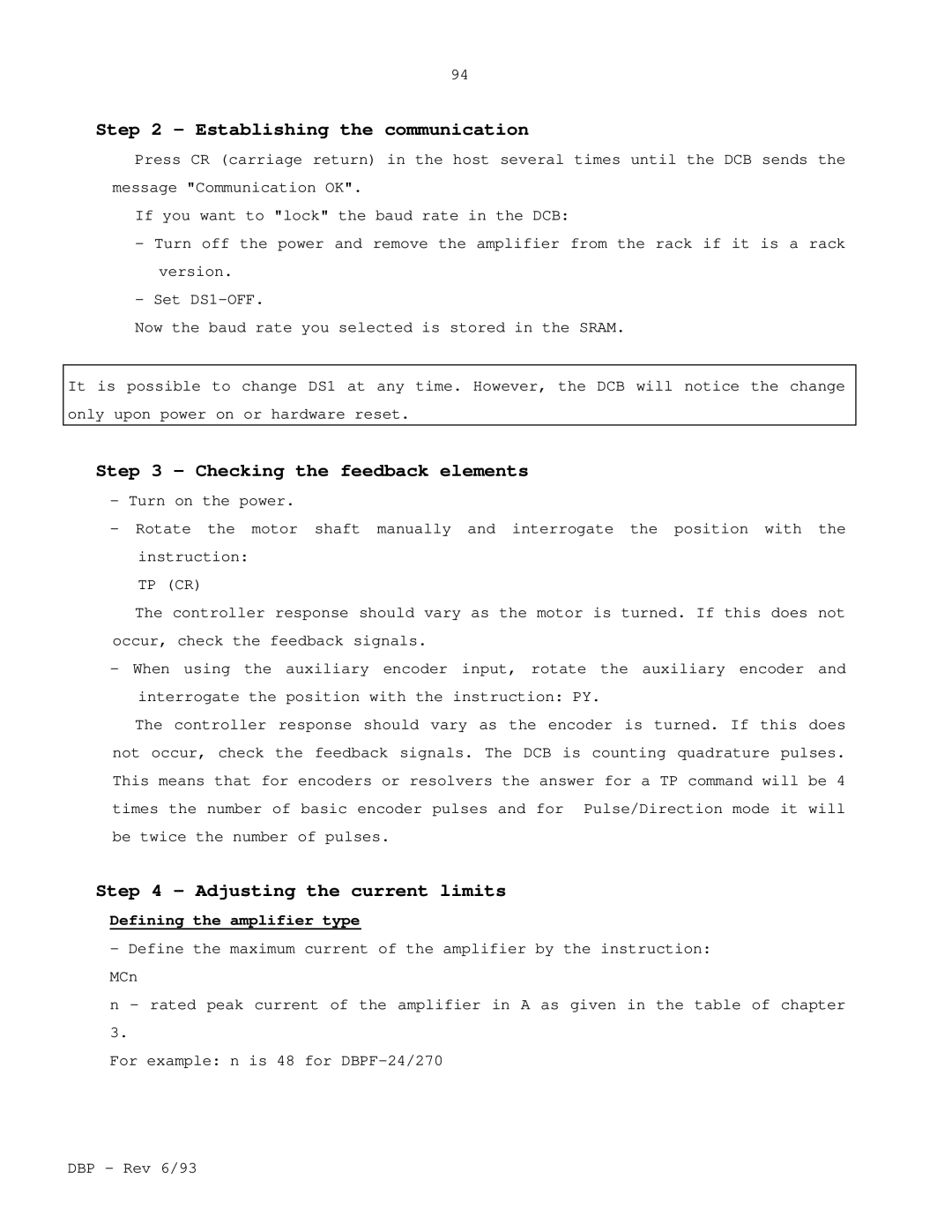
94
Step 2 - Establishing the communication
Press CR (carriage return) in the host several times until the DCB sends the message "Communication OK".
If you want to "lock" the baud rate in the DCB:
-Turn off the power and remove the amplifier from the rack if it is a rack version.
-Set
Now the baud rate you selected is stored in the SRAM.
It is possible to change DS1 at any time. However, the DCB will notice the change only upon power on or hardware reset.
Step 3 - Checking the feedback elements
-Turn on the power.
-Rotate the motor shaft manually and interrogate the position with the instruction:
TP (CR)
The controller response should vary as the motor is turned. If this does not
occur, check the feedback signals.
-When using the auxiliary encoder input, rotate the auxiliary encoder and interrogate the position with the instruction: PY.
The controller response should vary as the encoder is turned. If this does
not occur, check the feedback signals. The DCB is counting quadrature pulses. This means that for encoders or resolvers the answer for a TP command will be 4 times the number of basic encoder pulses and for Pulse/Direction mode it will be twice the number of pulses.
Step 4 - Adjusting the current limits
Defining the amplifier type
-Define the maximum current of the amplifier by the instruction: MCn
n - rated peak current of the amplifier in A as given in the table of chapter 3.
For example: n is 48 for
